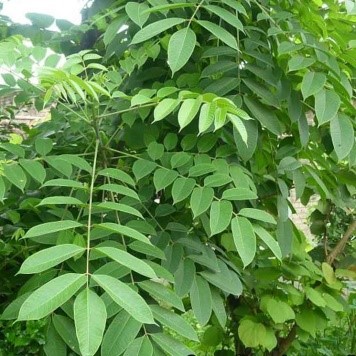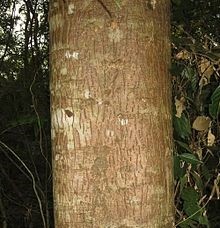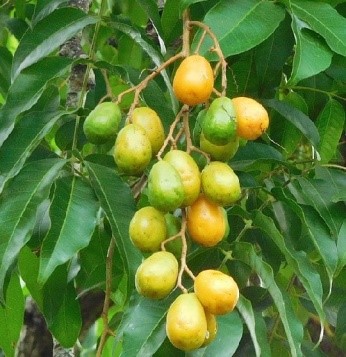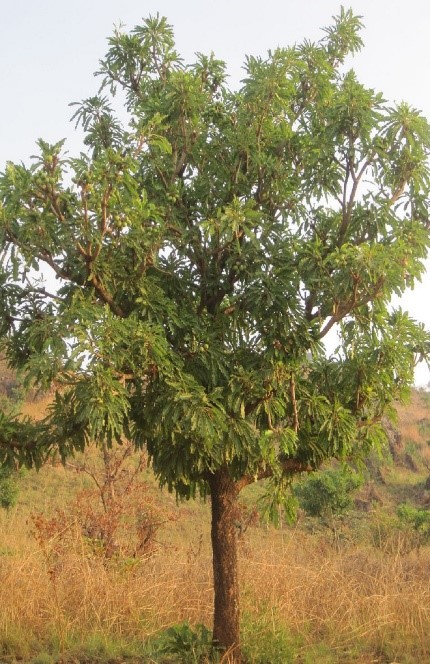Trees
Spondias mangifera Wild.
Spondias mangifera Wild.
Description :
This plant is medium sized deciduous tree,
and it grows up to the height of about 10 to 15 m. The bole can be free of
branches for more than half its height, 30 - 60cm in diameter, sometimes with
buttresses. Leaves are compound and opposite with 5 to 10 leaflets and are 28
to 40cm long. Leaf stalks are 8 to 14 cm long. Leaf base is rounded to wedge-
shaped, usually oblique with a tapering tip. Tiny flowers are borne in panicles
at the end of branches and are 25t o 35 cm long. Flowers are white and stalk
less. Sepals are in triangular shape. Petals are pointed, ovate-oblong and
about 2.5 mm long and 1.5mm wide. Fruit has yellowish orange colour at maturity
and is about 3.5 to 5 cm long and 2.5 to 3.5 cm wide and fruit is ellipsoid and
usually has 2 to 3 seeds. Outer part of endocarp is fibrous and inner part is
grooved and woody. Mature fruit is usually with 2 or 3 seeds.
Distribution :
This plant can be found in lowlands and
hill forests up to 1200m. It is native to Malaysia, the Philippines and
Indochina. It has also been widely cultivated and naturalized in Bhutan, China
(southern), India, Myanmar, Nepal and Pakistan. In Pakistan it is cultivated in
the Salt Range (Jhelum District). The plant can be found in mixed forests,
teak-forest, savannahs, and in dry areas, sometimes on limestone, at elevations
from the lowland up to 500 meters.
Uses :
The fruit of this plant has an amazing and
delightful sour flavour, and it is eaten as raw or cooked and also used as
ingredient for making chutneys, stews, pickles and jams, when ripe. People in
different areas eat it flower and leaves. The leaves are used for flavouring in
stews. The fruit is used as an astringent and antiscorbutic and it is used in
the treatment of bilious dyspepsia. The juice of the fruit is applied against
earache. The bark is recommended in the treatment of stomach aches and
dysentery. The paste of the bark is applied topically in the treatment of
rheumatism and swollen joints. The root is considered to be useful in
regulating menstruation.
(Arif
et al., 2015)



